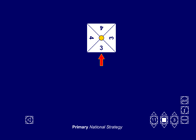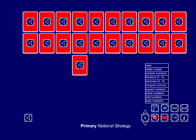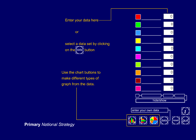Consolidation and practice
These resources are to support children in guided or independent work. Roll over the highlighted resources for a description.
Visit the nrich website  for further activities to support practice and application.
for further activities to support practice and application.
Number spinners

This interactive teaching program (ITP) is an ICT-based tool to support the exploration of number, reasoning and problem solving. Number spinners ITP allows the child or teacher to generate 3, 4, 5 or 6 random numbers on up to 3 spinners. Numbers from 0 to 99 can be displayed.
Twenty cards

This interactive teaching program (ITP) is an ICT-based tool to support the exploration of number, reasoning and problem solving. Twenty cards ITP allows the child or teacher to create a sequence or random set of numbered cards. The stacks created can support work on identifying, describing, extending and generating sequences.
Data handling

This interactive teaching program (ITP) is an ICT-based tool to support the exploration of data. Data handling ITP allows the child or teacher to enter data into a table and then create a vertical bar chart, a horizontal bar chart or a pie chart. The user can select from existing datasets, which can then be amended to show the impact and change on the charts, or they can enter collected data.
Opportunities to use and apply
Possible contexts include:
- Using practical resources, e.g. Empty out two tubes/boxes of sweets one at a time and compare the mode, median and mean of colours in each packet. Predict what you expect in a third packet and compare with expectations.
- Comparing real-life media, e.g. Categorise adverts in 10 pages taken from a tabloid papers and 10 pages from a broadsheet. Compare the mean, mode, and median of adverts in the different types of newspaper. Are there any differences and if so how would you explain these? Justify your own decision about which paper is best.
- Speaking and listening, e.g. Remove the line showing the final stages of a line graph. Ask children to explain and justify a suitable ending.
- PE, e.g. A group of children each throws a ball 10 times and measures their throws. How could you decide whom you would want on your team? Which would you use out of range, median, mean or mode? Justify your choice.

 Handling data
Handling data



